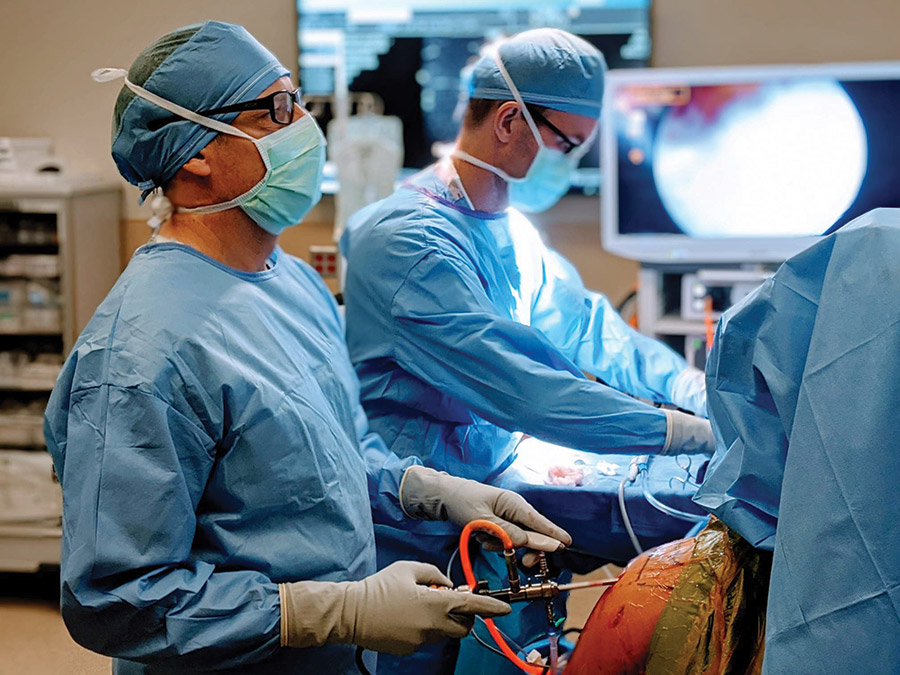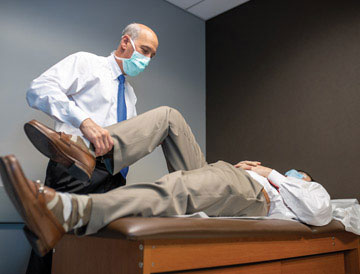A growing trend to watch as ASCs adopt orthopedic procedures in the COVID-19 era and address challenges and partnerships to adjust and evolve.
 Credit: Michael P. Ast, MD.™
Credit: Michael P. Ast, MD.™
Michael P. Ast, MD
Total joint replacement (TJR) has two main goals: to relieve pain and to restore deteriorated function most commonly associated with arthritis. While the ability of joint replacement to relieve pain and restore function has remained largely unchanged since the 1970s, implants are now markedly better than they used to be, and the technology aiding in the procedure has starkly improved as well. In addition to better implants and technology, one of the most significant recent changes is the ability of TJR to be performed in outpatient settings.
In a comprehensive analysis of this major trend, Michael P. Ast, MD, reviews key aspects of successfully performing total joint replacement in the outpatient setting.1 The topics he addresses include hurdles to adoption, the impact of COVID-19 as well as the value of the proper partner in this endeavor. TJR surgeries have been migrating out of the hospital setting gradually as outpatient joint replacement has shown to have a higher rate of patient satisfaction2, equivalent or lower rate of complications,3 and a high level of surgeon satisfaction.
"It is also incredibly beneficial to the healthcare system in general because of its lower cost, both for the initial procedure and the potentially reduced incidence of complications," says Dr. Ast.
Given the current trend towards outpatient joint replacement, what barriers have prevented outpatient joint replacement in the past, and what is driving the change in the current landscape? Even with a growing population of vocal surgeons pushing to move more surgery to the outpatient setting or ASC, this transition has been gradual.
Barriers to TJR Adoption
According to Dr. Ast, the industry as a whole has been slow to adopt TJR in an outpatient setting for two primary reasons.
"First, in the early 2000s, patients were still largely being treated with opioids after surgery, and since opioid medications have tremendous amounts of side effects, patients were often unable to undergo rehabilitation during the first few days following a procedure. Patients typically experienced a significant amount of pain during the early perioperative period, which made it difficult to perform tasks necessary to be discharged in a timely fashion. This resulted in longer stays at the hospital for recovery purposes," says Dr. Ast.
"Second, two decades ago the blood transfusion rate after primary elective joint replacement was almost 25%. Transfusions are not typically possible at an ambulatory surgery center, since many centers have strict policies stating that blood and blood products will not be administered, and that patients will be transferred to a more appropriate facility in the event that an emergency transfusion is required," he explains.
Since there had not yet been advances in pain management and blood management, the past was not as outpatient friendly as it is today. Fast forward to the present: almost all joint replacement surgeons in the United States utilize some type of multimodal analgesia with local anesthetics, anti-inflammatories and other opioid alternatives. Most have eliminated the use of IV opioids, which carry the highest risk of perioperative side effects. With less significant pain levels following surgery, patients are able to walk and begin rehabilitation more quickly.
Additionally, the widespread adoption of blood management protocols, including preoperative screening and treatment of anemia and liberal use of tranexamic acid (TXA), has reduced the risk of requiring blood transfusion for an appropriately selected patient to less than a half a percent.4
Driving the Migration
While the capacity to conduct total joint replacement surgeries has improved gradually, Dr. Ast postulates that the COVID-19 pandemic could force a more rapid migration of high acuity surgeries to the ASC as hospitals need to source innovative ways to adapt rapidly in response to the post-COVID-19 landscape.
"Since the pandemic was declared earlier last year, patients have become acutely aware of the risk that visiting a larger general hospital may pose to their health, and in turn, have postponed elective procedures in an effort to prevent exposure to individuals who have been infected with the COVID-19. ASCs and specialty hospitals stand to benefit significantly from this climate and provide a respite for hospitals and healthcare providers who are facing a backlog of postponed procedures," says Dr. Ast.
However, making such a transition may be perceived as complicated and costly, according to Dr. Ast.
"Vendor partners, such as Stryker, are poised to help make the TJR migration more efficient. Partnering with these vendors can provide access to a broad level of support such as evidence-based peri-operative protocols, necessary equipment and supply chain solutions that make ASCs and specialty hospitals run more efficiently," says Dr. Ast.
One of the toughest obstacles ASCs face is that they often lack the basic equipment necessary to do higher acuity cases, like joint replacement and spine surgery, because they were never built, designed or equipped with that intent. The emergence of Stryker's ASC business and similar vendors gives ASCs convenient options to expand their capacity for higher acuity surgeries with opportunities to assist in financing, capital upgrade requirements, and solutions for supply chain issues.
The same problem – that many centers were not designed with TJR surgeries in mind – informs a different issue at play: sterilization. ASCs, especially older ones originally designed for lower acuity cases, typically do not have the sterilization resources needed for the equipment necessary for cases like joint replacement. This is another area that new ASC-focused solutions can address by using technology and resources to limit the equipment necessary to do these surgeries as well as provide solutions for sterilization.
Additionally, especially in surgeon owned ASCs, the upfront capital cost to outfit an ASC to perform total joint replacement surgery is significant. Many ASCs simply don't have the capital on hand to make those investments immediately. Creative financing ideas from vendor partners, like Stryker, can be extremely beneficial to help eliminate barriers to new programs and growth.
There is no question that ASCs are going to become popular as a setting for TJRs over time. The traditional model of general hospitals providing large levels of inpatient orthopedic care is on the decline. Dr. Ast notes, "All trends indicate that we should expect outpatient facilities and orthopedic specialty hospitals to provide the majority of orthopedics in the future."
 PHOTO CREDIT: Ryan Shaver
PHOTO CREDIT: Ryan Shaver.svg?sfvrsn=be606e78_3)



.svg?sfvrsn=56b2f850_5)